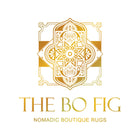A Journey Through Woven Worlds: Unveiling the Symbolism in Iranian Tribal Rugs, and a Story of Transformation
Attention filmmakers, artists, and museum curators! Are you seeking inspiration steeped in rich cultural heritage, timeless symbolism, and breathtaking artistic expression? Look no further than the captivating world of Iranian tribal rugs.

This passage invites us to explore the diverse tapestry of Iranian tribal rug regions: Qashqai, Luri, Afshar, Khamseh, Bakhtiari, Kurdi, Baluch, Turkmen, and Khorasan. Each region, with its vibrant sub-tribes, boasts a unique identity woven into its patterns, colors, wool quality, and intricate knotting techniques. Imagine immersing yourself in the vibrant reds and blues of Qashqai rugs, the geometric precision of Luri kilims, or the earthy tones of Baluch weavings – each a window into a distinct cultural perspective.

Remarkably, a common thread unites these diverse styles – the medallion. Often appearing in square or diamond shapes, these inherently stable forms seem to speak a universal language of security, stability, and protection for the household or community.
My son, Leo, used to struggle with focusing on his homework. His room felt chaotic, filled with distractions. Then, we brought in a stunning Khorasan rug with a central medallion. The intricate geometric patterns and calming earth tones seemed to create a sense of order and tranquility. Suddenly, Leo started spending more time in his room, focusing intently on his studies. The medallion, I believe, provided a visual anchor, a symbol of stability that helped him settle into his tasks.
This shift wasn't just visual. The rug, woven by hand with generations of cultural heritage embedded in its every knot, seemed to carry a calming energy. It became a conversation starter, prompting us to explore the rich history and symbolism behind each design element. This newfound interest in another culture broadened Leo's perspective and instilled a sense of respect for tradition and craftsmanship.

But the story doesn't end there. The passage goes on to highlight the fascinating presence of the number four in these rugs. Earth, air, fire, water; seasons; compass points; lunar phases – these diverse elements are woven together through the number four, suggesting its role as a powerful tool for structure, symbolism, and harmony.
This invites musicians to explore the potential of incorporating the number four into their compositions, adding depth and meaning through rhythmic structures or thematic references. It inspires filmmakers to consider the power of structure and symmetry in conveying balance and harmony within their narratives. And for museums, it opens the door to exploring the universality of symbolic numbers across cultures and artistic expressions.
Step into the world of Iranian tribal rugs and discover a treasure trove of inspiration. Let the vibrant colors, intricate patterns, and enduring symbols ignite your creativity. Whether you're a filmmaker, artist, or museum curator, delve into the rich cultural heritage woven into these pieces, and tell stories that resonate with audiences across the globe. Remember, the rug is not just a floor covering; it's a window into a world waiting to be explored.
So, dear reader, remember this: the art and culture woven into these rugs isn't just a distant echo of the past. It's a living legacy, waiting to enrich your own life and story. Just like the rug transformed my son's room, it can transform your space, your focus, and perhaps even your perspective. So, step into this tapestry of tradition, and discover the beauty and meaning it can bring to your own journey.




